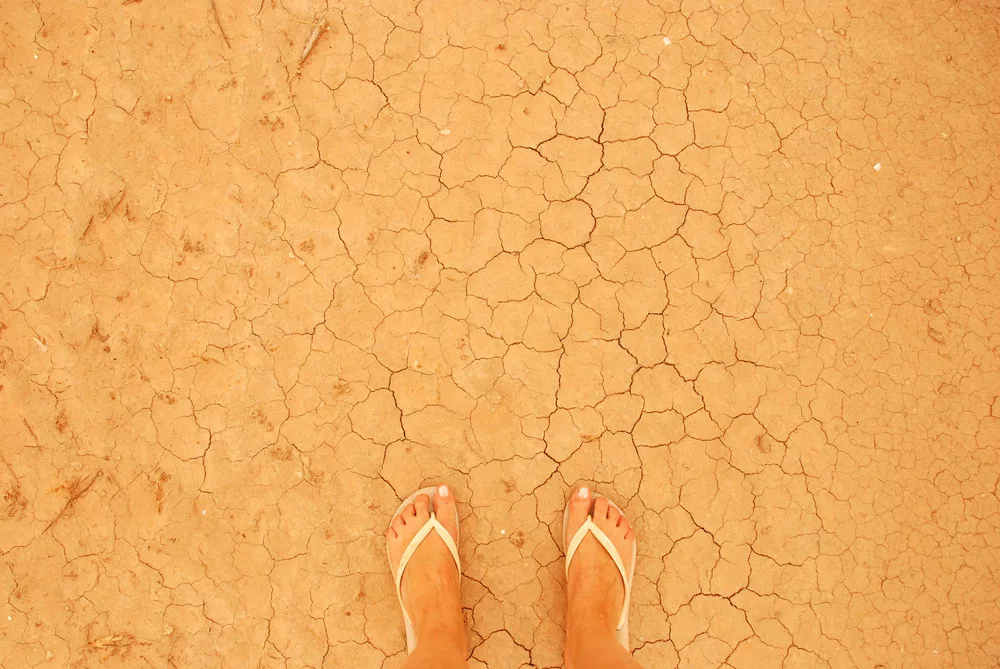Research published in July 2023 puts the cost of the heatwave at 0.6 points of global GDP. Against a backdrop of global warming, in this article, I review some of the statistics in the report and the likely development potential. In the long term, heatwaves could lead to the economic exclusion of entire regions.
7 statistics on the impact of heatwaves on development
• 0.6 GDP points : the cost of heatwaves in the United States, Europe, and Asia
• 40% : Decreased ability to perform physical work at 90°F (32°C).
• 0.9 points of GDP : Loss for Greece after 35 days over 32°C.
• 2.2% : Projected reduction in global working hours due to heat stress.
• 470 billion hours : Working hours lost in 2021 due to heat.
• 7% : Potential reduction in GDP growth rate for a major disaster.
• 100 billion : Annual losses cited by President Biden due to extreme heat in the United States.
It will have escaped no one’s notice that dramatic heat waves again marked the summer of 2023. Valencia (Spain) broke its absolute temperature record by 3 degrees, cactuses in Arizona are dying because night-time temperatures are too high, and July was the hottest month ever recorded on Earth. These heatwaves affect both human beings and companies. High temperatures have an economic cost that must be taken into account. With increasing heatwaves in July and August, companies’ activities are now negatively impacted beyond the mere summer vacations.
Excessive heat reduces productivity
It’s a fact that heat waves reduce productivity. We’ve all experienced it at least once. But as the number of heatwaves increases, a map of falling productivity is taking shape.
Let’s start with a few figures:
- The ability to perform physical work decreases by around 40% when temperatures reach 32°C.
- When temperatures rise to 38°C, productivity drops by 2/3.
Research published in Nature shows that Europe is warming 3 to 4 times faster than other regions at the same latitudes. The research identifies the jet stream as a likely cause of this accelerated warming. In Europe, Greece, and Spain are particularly at risk. The impact on their GDP is estimated at -1 and -0.9 growth points, respectively. On a global scale, it is estimated that 2.2% of working hours will be lost due to excessive heat.
This raises the question of how to adapt to working conditions.
The notions of workers and climate refugees are becoming increasingly intertwined.
How companies can adapt to the heatwave
There are several possible approaches: organizational, technological, and infrastructural.
Internal organization
Adjusting working hours is the easiest solution. During heatwaves, you need to start work earlier in the morning. More generally, summer heat waves raise the question of rebalancing services throughout the year. In the future, consider distributing working hours year-round rather than monthly. This would have the advantage of shifting the workload when weather conditions are more favorable, i.e., outside the summer months.
Technology
Air conditioning is, of course, THE technological solution. But its massive use also impacts electrical energy consumption and, therefore, global warming since fossil fuels largely dominate the energy mix. So there’s a real paradox to consider here.
Infrastructure
The last type of measure is more complicated to implement. These measures have to do with urban planning on the one hand and building architecture on the other. For example, the “greening” of buildings and urban spaces is a measure whose effectiveness is no longer in doubt.
Insulation and passive cooling are also worth considering in terms of the buildings themselves. Ironically, during these heatwaves, we see the merits of ancient building techniques such as badgirs (see video below), which have been used in Iran since the 8th century. These “cooling towers” capture and circulate the wind through the building.
In conclusion: territories of economic exclusion
This research raises the question of the future of certain regions. Quantifying the economic consequences of excessive heat shows that some areas will see their productivity and therefore, their attractiveness decline.
On the other hand, others could become more attractive because living conditions are more favorable. The notions of workers and climate refugees are becoming increasingly intertwined.
In Europe, for example, it is estimated that 0.61 days of heatwave will be added each year. Certain geographical areas, such as Greece, Italy, and Spain, could become “repulsions.” Companies would be forced to leave these regions, driven by two factors:
- competitiveness : as heat affects companies’ productivity too much, they would have to relocate to remain competitive
- legal : the risks posed by climate change in general, and heatwaves in particular (fires, for example), are already leading insurance companies to withdraw from certain regions. Without risk coverage, companies will be forced to leave too.
In the long term, entire geographic zones will become economic “no man’s land.” In the medium term, governments must intervene to keep their territories attractive, despite less-than-optimal year-round living conditions. Dubai is already a good example of this economic artificialisation through tax cuts. This micro-State trades its tax appeal for the tolerance of companies and individuals to an objectively untenable climate.
The problem is that the case of Dubai is anecdotal. Thanks to the oil windfall, Dubai can afford to make its small territory livable. It buys its “cooling,” which other states cannot do. Italy, Spain, and Greece will be unable to cool all their southernmost areas. Their finances won’t allow it. They will temporarily replace insurers who refuse to cover the risks, offering financial incentives after a bitter battle with the European Commission. But in the end, with the coffers empty, there will be no choice but to unravel this web of aid and drop the territories to their fate. More than ever, Europe will become a continent cut in two: the North, which will remain more or less prosperous, and the South, with its uncertain future.
Posted in Research.
